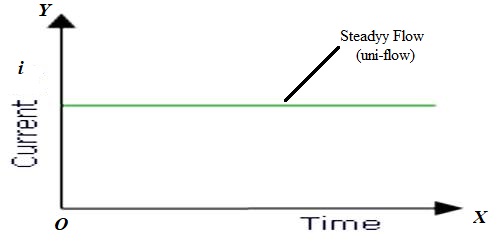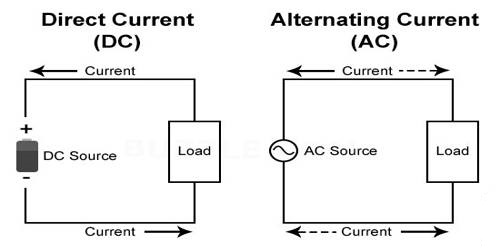Direct current: We know that the current we get from a battery or an electric cell flows always in one direction. This flow is called uni-directional or direct current. It is the unidirectional flow or movement of electric charge carriers. In short, it is written as D.C, D.C is shown by ‘i’ versus ‘t’ graph (Figure). The value or dimension of this flow may not be steady, but direction does never change.

Direct current is the constant movement of electrons from an area of negative (−) charges to an area of positive (+) charges through a conducting substance such as a metal wire. The DC is usually used in low-voltage applications such as battery operated equipment.
Sources of direct Current: DC generators, Batteries, Solar panels, Thermocouples
Advantages: Most equipment is more efficient when directly powered from DC. They are fewer risks of shock hazard for voltages below 48 Volts.
Disadvantages of DC: High cost when dealing with high current systems; i.e. larger cables, fuses, switches and other components required for high current, low voltage applications. It is difficult to obtain DC appliances and equipment.












